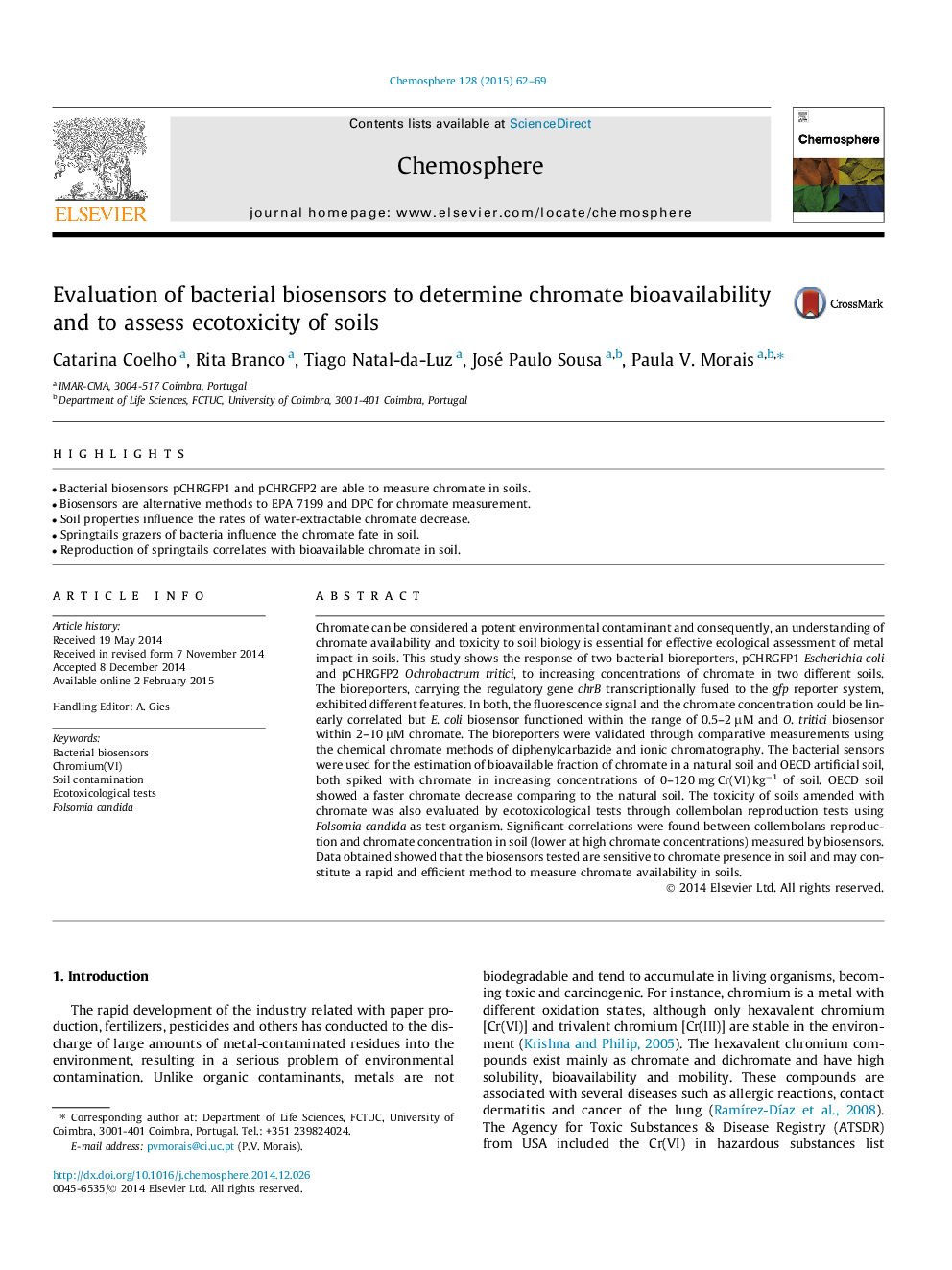| کد مقاله | کد نشریه | سال انتشار | مقاله انگلیسی | نسخه تمام متن |
|---|---|---|---|---|
| 4408472 | 1618843 | 2015 | 8 صفحه PDF | دانلود رایگان |
• Bacterial biosensors pCHRGFP1 and pCHRGFP2 are able to measure chromate in soils.
• Biosensors are alternative methods to EPA 7199 and DPC for chromate measurement.
• Soil properties influence the rates of water-extractable chromate decrease.
• Springtails grazers of bacteria influence the chromate fate in soil.
• Reproduction of springtails correlates with bioavailable chromate in soil.
Chromate can be considered a potent environmental contaminant and consequently, an understanding of chromate availability and toxicity to soil biology is essential for effective ecological assessment of metal impact in soils. This study shows the response of two bacterial bioreporters, pCHRGFP1 Escherichiacoli and pCHRGFP2 Ochrobactrumtritici, to increasing concentrations of chromate in two different soils. The bioreporters, carrying the regulatory gene chrB transcriptionally fused to the gfp reporter system, exhibited different features. In both, the fluorescence signal and the chromate concentration could be linearly correlated but E. coli biosensor functioned within the range of 0.5–2 μM and O. tritici biosensor within 2–10 μM chromate. The bioreporters were validated through comparative measurements using the chemical chromate methods of diphenylcarbazide and ionic chromatography. The bacterial sensors were used for the estimation of bioavailable fraction of chromate in a natural soil and OECD artificial soil, both spiked with chromate in increasing concentrations of 0–120 mg Cr(VI) kg−1 of soil. OECD soil showed a faster chromate decrease comparing to the natural soil. The toxicity of soils amended with chromate was also evaluated by ecotoxicological tests through collembolan reproduction tests using Folsomia candida as test organism. Significant correlations were found between collembolans reproduction and chromate concentration in soil (lower at high chromate concentrations) measured by biosensors. Data obtained showed that the biosensors tested are sensitive to chromate presence in soil and may constitute a rapid and efficient method to measure chromate availability in soils.
Journal: Chemosphere - Volume 128, June 2015, Pages 62–69
